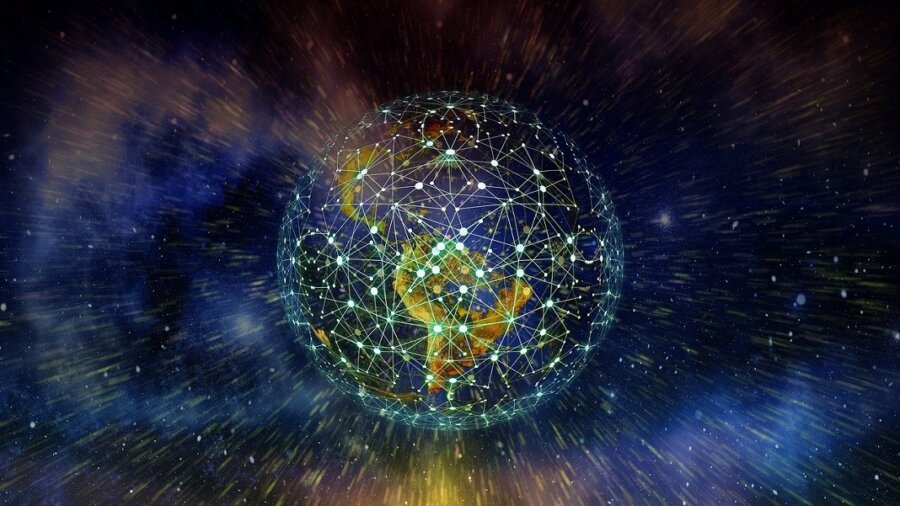
It’s crunch time on climate change, and companies, governments, philanthropists, and NGOs around the world are starting to take action, be it through donating huge sums of money to the cause, building a database for precise tracking of carbon emissions, creating a plan for a clean hydrogen economy, or advocating for solar geoengineering—among many other initiatives.
But according to Nvidia, to really know where and how to take action on climate change, we need more data, better modeling, and faster computers. That’s why the company is building what it calls “the world’s most powerful AI supercomputer dedicated to predicting climate change.”
The system will be called Earth-2 and will be built using Nvidia’s Omniverse, a multi-GPU development platform for 3D simulation based on Pixar’s Universal Scene Description. In a blog post announcing Earth-2 late last week, Nvidia’s founder and CEO Jensen Huang described his vision for the system as a “digital twin” of Earth.
Digital twins aren’t a new concept; they’ve become popular in manufacturing as a way to simulate a product’s performance and tweak the product based on feedback from the simulation. But advances in computing power and AI mean these simulations have become much more granular and powerful, with the ability to drive meaningful change—and that’s just what Huang is hoping for with Earth-2.
“We need to confront climate change now. Yet, we won’t feel the impact of our efforts for decades,” he wrote. “It’s hard to mobilize action for something so far in the future. But we must know our future today—see it and feel it—so we can act with urgency.”
Plenty of climate models already exist. They quantify factors like air pressure, wind magnitude, and temperature and plug them into equations to get a view of climate patterns in a given region, representing those regions as 3D grids. The smaller the region, the more accurate a model can be before becoming unwieldy (in other words, models must solve more equations to achieve higher resolution, but trying to take on too many equations will make a model so slow that it stops being useful).
This means most existing climate models lack both granularity and accuracy. The solution? A bigger, better, faster computer. “Greater resolution is needed to model changes in the global water cycle,” Huang wrote. “Meter-scale resolution is needed to simulate clouds that reflect sunlight back to space. Scientists estimate that these resolutions will demand millions to billions of times more computing power than what’s currently available.”
Earth-2 will employ three technologies to achieve ultra-high-resolution climate modeling: GPU-accelerated computing; deep learning and breakthroughs in physics-informed neural networks; and AI supercomputers—and a ton of data.
The ultimate aim of this digital twin of our planet is to spur action that will drive meaningful change, both in terms of mitigating the negative impacts of climate change on populations and mitigating climate change itself. Extreme weather events like hurricanes, wildfires, heat waves, and flash floods are increasingly taking lives, damaging property, and forcing people to flee from their homes; you’ve doubtless seen the dire headlines and heartbreaking images on the news. If we could accurately predict these events much further in advance, those headlines would change.
Huang hopes Nvidia’s model will be able to predict extreme weather changes in designated regions decades ahead of time. People would then know to either not move to certain areas at all, or to build the infrastructure in those areas in a way that’s compatible with the impending climate events. The model will also aim to help find solutions, running simulations of various courses of actions to figure out which would have the greatest impact at the lowest cost.
Nvidia has not shared a timeline for Earth-2’s development nor when the supercomputer will be ready to launch. But if its Cambridge-1 supercomputer for healthcare research is any indication, it won’t be all that long; Cambridge-1 took just 20 weeks to build and is ranked as one of the 50 fastest computers in the world.
In any case, there seems to be no lack of dedication or urgency to get Earth-2 up and running. Huang concluded, “All the technologies we’ve invented up to this moment are needed to make Earth-2 possible. I can’t imagine a greater or more important use.”
Image Credit: geralt / 23615 images
* This article was originally published at Singularity Hub

0 Comments